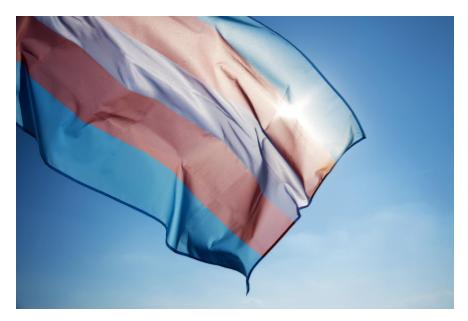Transphobia in Online Environments

March 1, 2021
Since its beginning, the internet has been a place to share opinions and thoughts with the world. However, these opinions are not always positive and can have negative effects on people reading them. Enter prejudice. Prejudice has been present in different forms and has existed since the beginning of humanity. In some way, it’s in all people. This article will be focusing on a specific form of prejudice, transphobia. Transphobia, according to Planned Parenthood is defined as “The fear, hatred, disbelief, or mistrust of people who are transgender, thought to be transgender, or whose gender expression doesn’t conform to traditional gender roles. Transphobia can prevent transgender and gender nonconforming people from living full lives free from harm.”
Transphobia has been present for a long time in society, which emphasizes gender roles. The internet is not safe from it. In a 2019 study by Ditch the Label, an anti-bullying organization, 1.5 million of the 10 million transgender-related comments on social media platforms over a three and a half year period beginning in 2016 were found to be transphobic. This is an astronomically high number. With this amount of comments, transgender people are bound to see them and have to deal with the emotional effects.
Not only this, but transgender voices are silenced by transphobic actions online. A transgender TikToker and Instagram influencer Veondre Mitchell was temporarily banned from TikTok, after transphobic people online mass reported her account. On January 14th she posted “I got banned on TikTok till January 20th for hitting my maximum amount of community guideline violations. Every violation has been because of my transphobic bullies reporting my videos out of hatred of what I do. I’m not the first trans person this has happened to and this is so frustrating.” A day later, her account was restored after action was taken by her followers, however, this was clearly an attempt to silence transgender voices.
Transphobia isn’t just being rude online either, hearing it can have long lasting effects on transgender people, especially transgender youth. Psychology Today reports that transgender people are more likely to have mental health problems because “the distress and impairment, considered essential characteristics of mental disorders, among transgender individuals primarily arises in response to the discrimination, stigma, lack of acceptance, and abuse they face on an unfortunately regular basis.” Transphobia is not victimless, and the more hateful actions taken online, the more transgender people seeing it have to suffer.
Overall, while we cannot filter what others say online, there are some ways to help. Supporting transgender influencers, and defending their right to have a voice shows transgender youth they’re not alone and will be supported in the future. Be mindful of what you say online towards anyone but especially transgender people. One of the easiest actions you can take is putting your pronouns in your bio or name online. This helps normalize it so transgender people can feel safer and have their pronouns used in online environments. Transphobia is rooted deeply in our society, but together we can help end the stigma.

Jax West • Mar 6, 2021 at 9:33 pm
This is wonderfully written! It really educates us on how transgender people are affected by hateful
speech. Hopefully it educates people to be kinder to others on the internet, and it tells the struggles that transgender youth go through on social media. I applaud you for bringing attention to this topic?